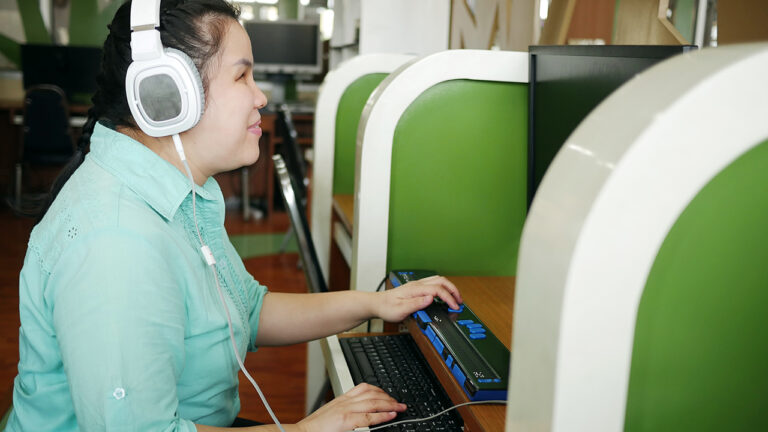The pandemic caused many people with vision loss to work remotely. In the past year, employees successfully learned how to separate home from workspace, manage multiple Zoom calls, and help children with remote learning. But now employers are requesting their staff to come back into the office. This requirement leaves some visually impaired employees worried, stressed out, or at least concerned. According to a survey conducted by Envoy, 66 percent of employees are concerned about returning to the physical office. So, how do you prepare for this adjustment? How comfortable are you sharing close space with your manager and co-workers under COVID? Let’s look at some ways to get ready that can help ease your mind and make a smooth transition.
Communicate your concerns and ask questions.
Whether your supervisor has communicated return to the office guidelines or not, be assertive. Be sure to let them know your concerns and ask questions. Get as many details as possible. How will the return look? What policies are in place to keep staff safe? What are the cleaning procedures? How will social distancing work, especially for the visually impaired? Will they continue to offer adaptive technology resources? The more information and knowledge you have about the transition back to the office, the more empowered you will be and the more you can prepare.
Make sure accommodations are available.
As you prepare to return to the office, be sure the accommodations you require are available. Devices such as magnifiers, braille displays, or screen reading software need to travel with you to perform your job duties. Or, if you were using your personal adaptive technology, be sure your office equipment is ready for your return. You can also chat with management and the IT department to make arrangements.
Check transportation schedules.
While working remotely, your commute was a quick jaunt down the hall or stairs to your workspace. Now, returning to the office means a longer commute. Get reacquainted with your transportation schedule, whether public transit, carpool, or rideshare services. Learn about updates or changes that might have happened while you worked at home. Additionally, do a practice run to be sure you can arrive at work promptly.
Adjust morning and evening routines.
Besides checking the schedule for your work commute, adjust your daily routine. Evaluate your morning rituals. Look at your time to dress, eat breakfast, and prepare to leave the house for work. Determine what time this will be and begin starting your day at this time to ensure a smooth transition. When leaving work at the end of the day, consider the time needed to get home. Alter evening plans, such as dinner and family time.
Dress for success.
Returning to the office might also mean returning to more professional attire. Assess your work clothing in advance to ensure you have the proper outfits to meet the company dress code. Start gathering items and organizing your closet for a polished appearance.
Be kind to yourself.
Lastly, understand that returning to the office during a pandemic can be stressful. So, be kind to yourself and give time for adjustment. Also, know you are not alone and that others feel the same. Honestly, share your feelings with people you trust and know who are supportive. Know that you are learning and this experience is new; mistakes will be made along the way. Take it one day at a time.
Whether you need some assistance with your adaptive technology or have a question about public transportation, Outlook Enrichment is here to help. Contact us with any questions you might have about returning to the office.



